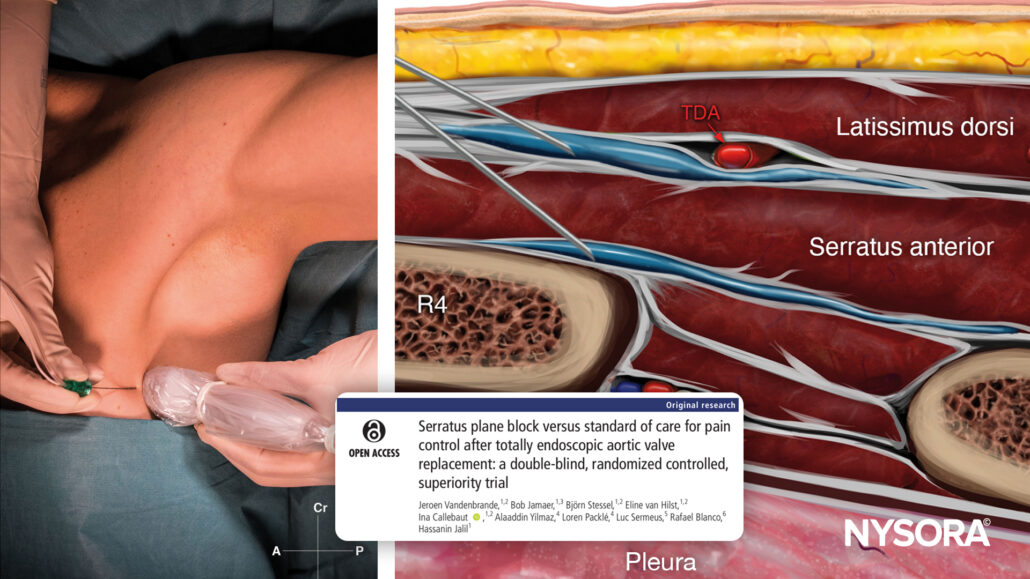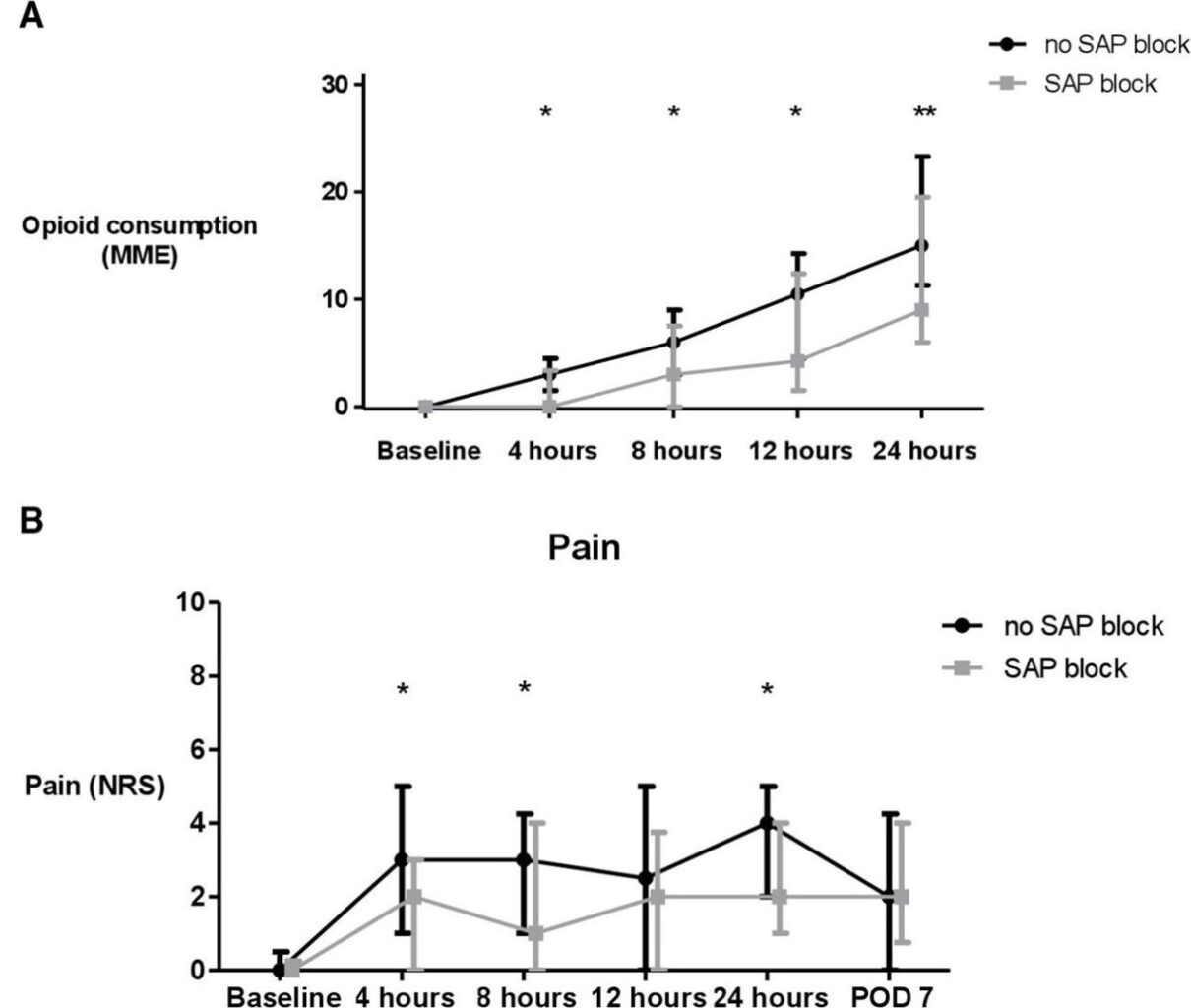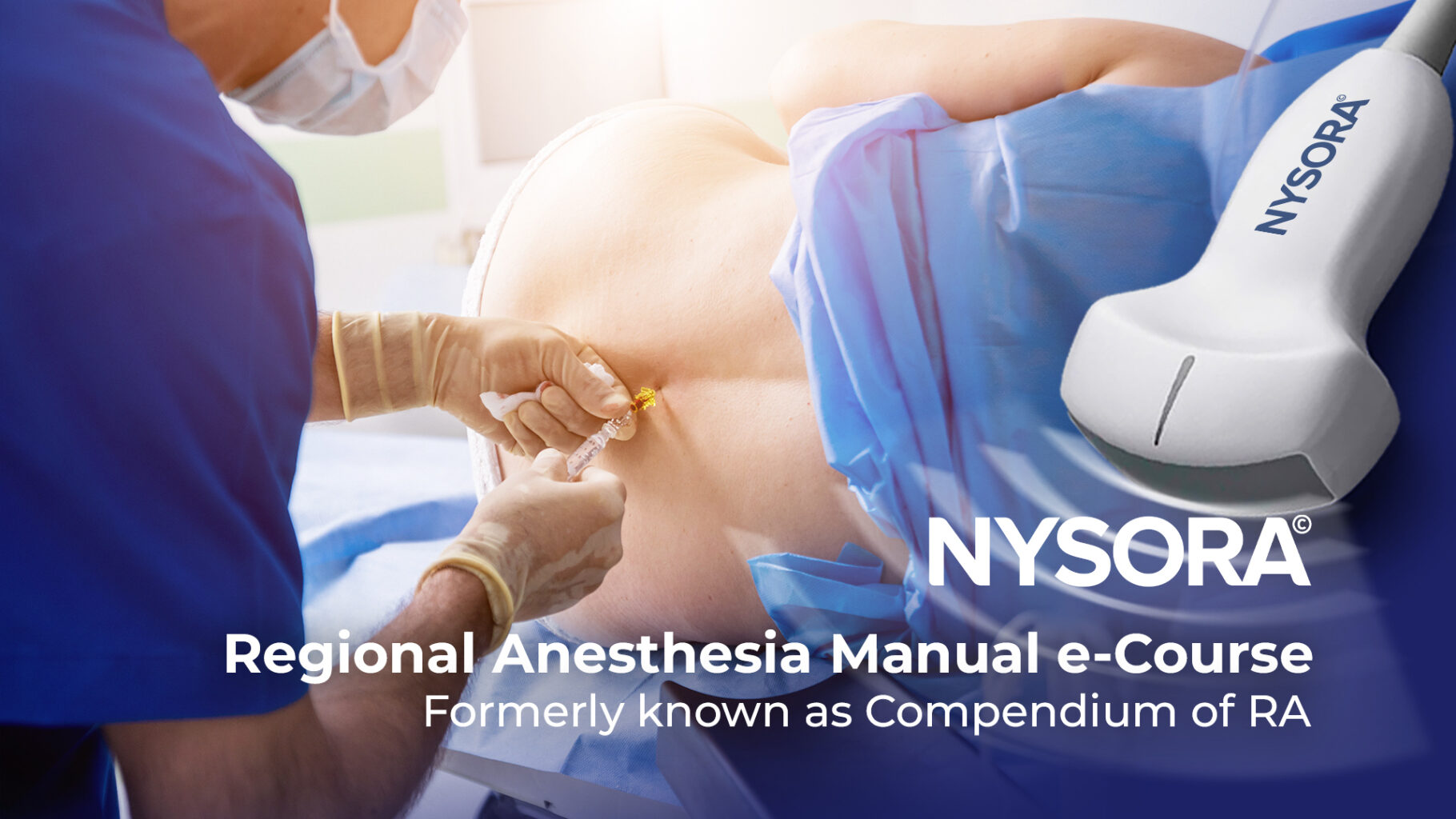
New Approach in Pain Management: Serratus Plane Block Reduces Opioid Use After Endoscopic Aortic Valve Replacement
Introduction
Aortic valve disease, affecting around 3-4% of the Western population and up to 6% of those over 75, is a significant health concern. The only curative treatment is aortic valve replacement (AVR), which has evolved from open-heart surgery to minimally invasive techniques such as total endoscopic aortic valve replacement (TEAVR). Despite surgical advancements, postoperative pain management remains reliant on opioids, which have several side effects. This study explores the efficacy of the serratus anterior plane block (SAPB) in reducing opioid consumption and pain after TEAVR.
Study overview
- Objective: To assess if SAPB can reduce opioid use and pain compared to standard care in TEAVR patients.
- Design: A prospective, double-blind, randomized controlled trial.
- Participants: 75 patients undergoing TEAVR, divided into SAPB and control groups.
- Primary outcome: Opioid consumption within the first 24 hours post-surgery.
- Secondary outcomes: Pain scores at 4, 8, and 24 hours post-surgery.
Methodology
- Adult patients scheduled for TEAVR, excluding those with chronic pain, opioid dependence, or significant chest trauma.
- Patients were randomly assigned to receive SAPB plus standard care or standard care alone.
- Both patients and healthcare providers were blinded to group assignments.
- The SAPB group received a single injection of bupivacaine under ultrasound guidance targeting the serratus anterior plane.
Results
- Median opioid use was significantly lower in the SAPB group (9 morphine milligram equivalents [MME]) compared to the control group (15 MME).
- The SAPB group reported lower pain scores at 4, 8, and 24 hours post-surgery.
- There were no significant differences in postoperative complications or length of hospital stay between groups.

(A) Cumulative opioid consumption (MME) up to 24 hours after block placement. (B) Pain scores (NRS) at predefined time intervals. MME, morphine milligram equivalent; NRS, Numeric Rating Scale; POD, postoperative day; SAP, serratus anterior plane.
Discussion
The study confirms that SAPB can significantly reduce opioid consumption and pain intensity after TEAVR. These findings align with previous research on SAPB’s efficacy in thoracic and cardiac surgery. However, further research is needed to optimize the timing, drugs, and dosage of SAPB and to validate these findings in broader clinical settings.
Conclusion
SAPB offers a promising alternative to opioid-based pain management in TEAVR, potentially improving patient outcomes and reducing opioid-related complications.
For more detailed information, refer to the full article in Regional Anesthesia & Pain Medicine.
Vandenbrande J, Jamaer B, Stessel B, et al. Serratus plane block versus standard of care for pain control after totally endoscopic aortic valve replacement: a double-blind, randomized controlled, superiority trial. Regional Anesthesia & Pain Medicine 2024;49:429-435.
For more information on the serratus anterior plane block and the complete guide to the most frequently used nerve blocks, enroll in the Regional Anesthesia Manual e-Course on the NYSORA website or download the Nerve Blocks App HERE, and you can also find it in the book format on Amazon.




